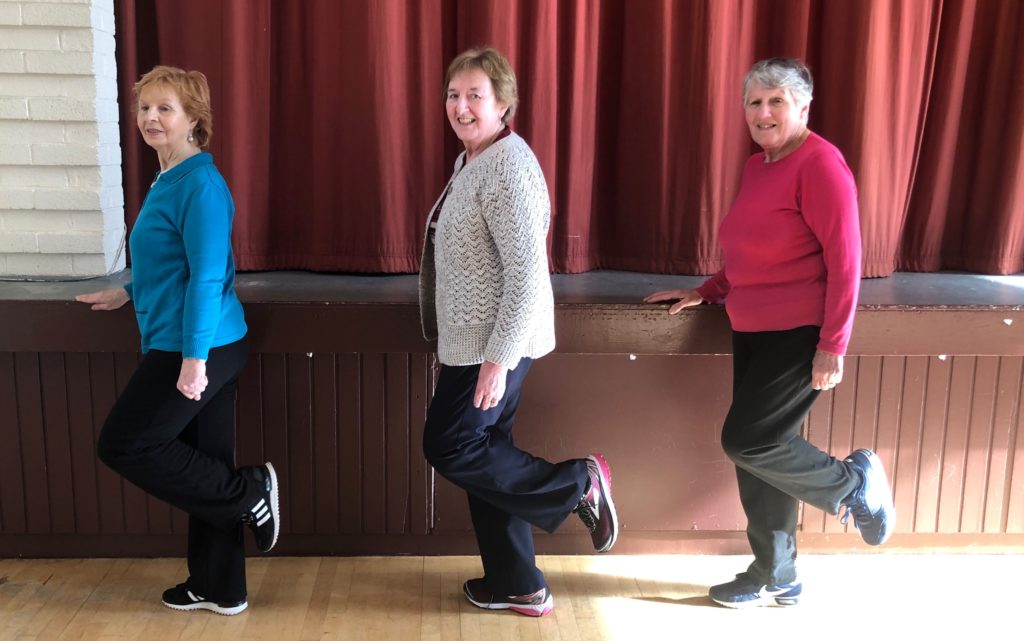It’s pretty obvious with the advances in technology in recent years there is huge emphasis on our bodies being pulled into a slouched posture. So much so that our leniency to constantly move forward, whether it be our arms reaching towards the steering wheel while driving or looking down our neck as we scroll through our smart phones, health care professionals are now diagnosing for new medical conditions such as ‘text neck’ and ‘computer back’. So, let’s attack this all too common problem in today’s society before you start to walk around doing your best hunchback of Notre Dame impression!
In this blog you will gain a better understanding of movement, how to zone in on making improvements in mobility and become more of a fully functional human being.
Nowadays it seems there is a huge emphasis on the strength aspect of physical activity in the fitness world. But it is important to remember that this is only one element. We must always keep in mind stability and mobility when doing strength and conditioning. If we focus too much on S&C and not enough on mobility we start to see muscular imbalances. For instance, if you find yourself suffering with rounded shoulders (meaning over-active upper back muscles and under-active chest muscles) and don’t correct this defect through mobility exercises you will start to deadlift with rounded shoulders. This postural deviation will then carry into everyday movements like picking something up off the ground, leading to overworked upper back extensor muscles, shortened chest muscles and potential rotator cuff dysfunction. Remember, practise makes permanent! In other words, by practising correct form in the gym such as a deadlift, the positive effects will stream into your motor control for everyday activities, meaning less chance of pulling your back out when bending over.
“Mobility is a movement-based, full-body approach that takes into account all the elements that limit movement and performance. Consider mobilization techniques as tools for improving motor control, range of motion and maintaining joint mechanics and tissue health”.
Kelly Starrett
It has been suggested that resistance training is likely to produce more improvements in flexibility when compared to static stretching alone. However, it’s crucial to remember that resistance training in this case was performed at full range of motion (1). In agreement with Raab et al. (2) I believe too many recreational gym-goers are compromising full range (i.e quality of movement) over reaching for PB’s. In these cases they are opening up to a wide range of movement deficiencies that will more than likely result in problems down the road. My recommendation is to flip that poor movement pattern by focusing on slow controlled full-range movement, coupled with mobilizations. For instance, consider your squat. If you can’t get into a deep squat it is possibly due to limitations in ankle flexibility. Make mobility easy by targeting your restricted areas. While standing, wrap a band around your ankle, creating tension, keep your entire foot on the ground and drive your knee forward. You want to carry out this to its end range and repeat until its starts to feel more comfortable or feel a positive change. If this limitation in mobility was to continue you may be looking at too much force exerted on the knees, meaning that dreaded word… INJURY!
Starting to realise the importance of mobility yet?
Here are some fundamental rules on how to tackle mobility:
•Spend 10-15 minutes mobilizing each day. Target opening up the opposing areas to the positions you constantly find yourself in. For example if you have been in a seated position (a primary cause of hip impingement) spend 1-2 mins doing the couch stretch at the end of each day. It’s that simple.
•If it doesn’t feel right, treat it. Remember to mobilize upstream and downstream of the problem too. Everything is connected!
•Use mobility exercises as a warm up in preparation to specific muscle groups being worked, or in between warm up sets. Utilize bands as a distraction for your joints to open up the capsule, by lubricating it with the required synovial fluid to safely increase resistance and the range of motion for heavier working sets.
•Finish every workout with static stretching or foam rolling. This is where we are getting into soft tissue work. A.K.A making the changes. This is done by finding that ‘sticky’ soft tissue restriction, and homing in on it by carrying out some deep breathing, moving the joint where that muscle acts on through its range of motion and applying some contractions and relaxations through the muscle. 2 minutes on each problem area.
•Take up yoga. Even once a week. Can’t afford it? YouTube says otherwise. It is a great form of movement to promote stretching, stability and proprioception (your ability to balance). Trust me, you’ll thank yourself in years to come.
Finally, use strength and conditioning movements not only as one component of physical exercise but also to identify restrictions in mobility. Unfortunately, there is no general rule of thumb or one size fits all approach, but try to follow the above fundamentals and you will be on the right track.
Take home message… Don’t let restrictions in mobility break you. Allow them to make you stronger.
References
1. SAM K. MORTON, JAMES R. WHITEHEAD, RONALD H. BRINKERT, AND DENNIS J. CAINE. (2011). RESISTANCE TRAINING VS. STATIC STRETCHING: EFFECTS ON FLEXIBILITY AND STRENGTH. Journal of Strength and Conditioning Research. 1 (1), p1-7.
2. Raab, DM, Agre, JC, McAdam, M, and Smith, EL. Light resistance and stretching exercise in elderly women: Effect upon flexibility. Arch Phys Med Rehabil 69: 268–272, 1988.
3. Dr. Kelly Starret (2013). Becoming a Supple Leopard. United States of America: Victory Belt . 130-159.



